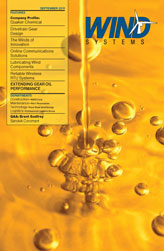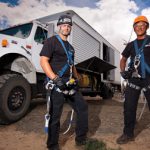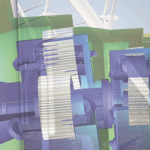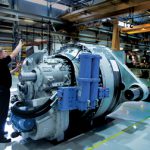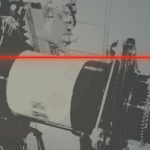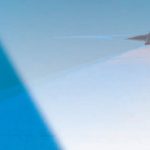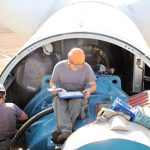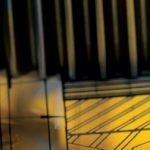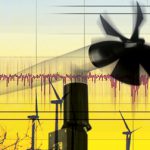The cost of energy plays an increasingly important role in today’s world. This applies to all different types of energy production. Since wind energy is one of the most important sources for renewable energy production nowadays, it is closely monitored regarding the cost of energy and wind energy’s potential for a high return on investment.
The factors that influence the energy production costs of a wind turbine are the lifecycle costs, which include costs for the overall wind turbine construction, maintenance, and service costs, as well as the output generated during the lifecycle. Therefore reliability, serviceability, and high efficiency—as well as a compact wind turbine design—are the key requirements for wind turbines. Since the drivetrain is the “heart” of a wind turbine, during the design phase all those aspects have to be especially considered. Figure 1
The conventional drivetrain design consisting of a three-stage gearbox, coupling, and generator is a very reliable concept and is the standard drivetrain for wind turbines, which has a track record of almost 150 GW globally installed base. New concepts, like the HybridDrive are especially designed to meet these requirements for compact design, high efficiency, and great serviceability. Every concept has its own advantages, so it is not possible to talk about the “perfect” drivetrain design. But, each drivetrain meets the specific requirements of a single customer so that he/she has the choice of which concept should be employed in its wind turbines. In the following article the HybridDrive concept is introduced and the major advantages explained.
Compact and Efficient
The main focus of the HybridDrive is its compact design. A two-stage gearbox is directly connected to a permanent-magnet-operated generator, which means that the length of the drivetrain can be shortened by about 35 percent. Although the HybridDrive has an extremely compact design, it has a very high efficiency. If the efficiency of the HybridDrive is compared with other technologies that are available, it has a peak value of more than 94 percent. This means that it achieves the best annual efficiency of all the existing technologies. Figure 2
Its compact dimensions present various advantages for the design of a wind turbine. If the HybridDrive is used to replace an existing wind turbine design, it is possible to utilize the space that has been saved for the converter and transformer instead of locating these in the tower. This choice of location for the transformers reduces the low-voltage cable (energy) losses, which improves efficiency. If the objective of the wind turbine manufacturer is to construct the nacelle to be as compact as possible, this can also be achieved with the HybridDrive. Any configuration is possible with the HybridDrive, whether it is positioned with ust one bearing, a dual-bearing rotor shaft, or with a converter and transformer in the tower.
Depending on the concept, the costs for the tower can be reduced as a result of the reduced weight of the nacelle; not only this, transportation is easier as the nacelle dimensions have been reduced. The customer is free to choose which concept he/she wants to focus on. Figure 3
Modular Design
A well thought out maintenance concept was already taken into account in the early design phase of the HybridDrive. Despite its compactness, the HybridDrive has a modular design, which enables individual parts to be disassembled or replaced for maintenance purposes. The benefit of this is active risk management. For example, the service crane of the nacelle can lift the individual modules, so that even when large-scale service is necessary, there is no need for an external crane. This considerably reduces service and maintenance costs. The reliability and quality of the HybridDrive is optimized, as there is only one supplier involved who is responsible for the design and quality assurance of the core of the wind turbine: its drivetrain.
The advantage of the HybridDrive concept over directly-driven wind turbines is that it only uses 20 percent of the quantity of rare earth materials that are required for a direct drive. As a consequence, dependency on one particular raw material is considerably lower, and costs can be more easily calculated over the long term. Since the sourcing and production of rare earth material is currently still under discussion, it is also possible to design the HybridDrive without any permanent magnets at all. Figure 4
The first prototype of the HybridDrive has an output of 3MW and is intended for use in an offshore turbine. The concept can also be easily implemented for the 6-7MW power range.
Teaming Up for Technology
Winergy introduced the HybridDrive drivetrain concept as a new member of its product family this year at Hannover Fair and at AWEA WINDPOWER 2011. The HybridDrive will be employed for the first time in the Fuhrländer FL 3000 wind turbine system. The project is the result of a long-term partnership between Winergy AG, Fuhrländer AG, and W2E Wind to Energy GmbH, and is to be completed within one year. As described, the HybridDrive sets itself apart as a result of its compact dimensions and the combination of a two-stage planetary gearbox and a medium-speed synchronous generator in one unit. The drivetrain is supplemented by a frequency converter.
The new FL 3000 wind turbine uses the “Larus Compact” drivetrain concept already proven in the FL 2500. This concept integrates components in order to maximize security and technical availability. The wind turbine will have a rotor diameter of 120 m and a rated power output of 3MW. The wind turbine system is suitable for use up to wind class IEC 2a. Table 1
Conclusion
The new HybridDrive is an exciting and competitive drivetrain design. Both the conventional drivetrain and the HybridDrive have their advantages, as each offers the opportunity to reduce the cost of energy, when employed for the right application. Ultimately, the customer must decide which concept fits his/her requirements best.



















